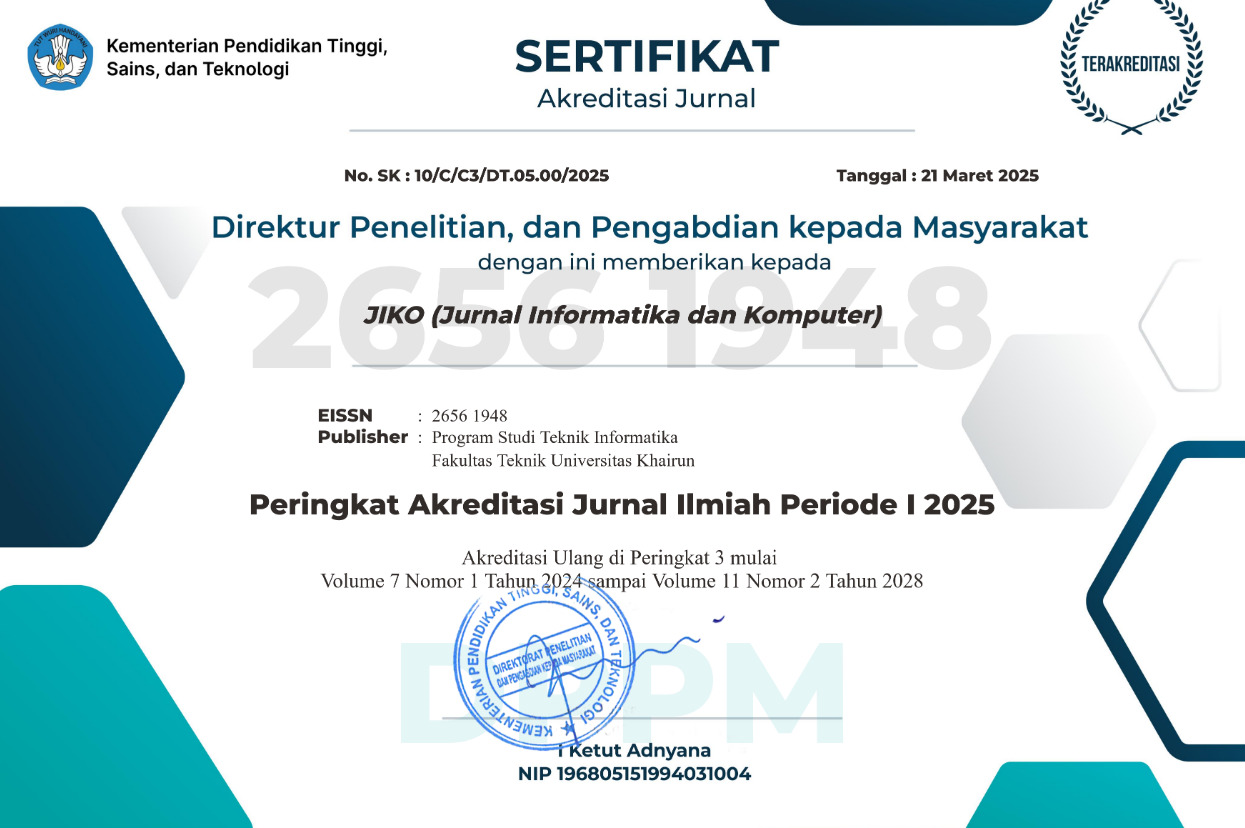Comparison Efficacy of VGG16 and VGG19 Insect Classification Models
Abstract
This study compares two popular deep-learning models, VGG16 and VGG19, for insect classification. This study aims to evaluate insect detection architectures to automate insect identification. We use a large, heterogeneous dataset of insect species, including common pests and beneficial insects, and their images to achieve this goal. The dataset was used to re-adjust the VGG16 and VGG19 models and analyze their classification performance. With an average improvement of 1,8%, VGG19 outperforms VGG16 in insect classification accuracy. VGG19 is more robust because it can handle complex traits and subtle insect morphology differences. Each architecture's model training duration and computational resources are examined for their practicality in real-world scenarios. This study emphasizes deep learning models in insect classification and shows VGG19's higher accuracy and robustness than VGG16. These findings matter to entomologists, agricultural researchers, and pest control experts. They can improve insect identification accuracy and effectiveness using VGG19-based models, which can help solve insect-related problems in various fields.96.28 percent accuracy was achieved with the implementation of VGG16, according to the experimental findings; 97.07 percent accuracy was obtained with the implementation of VGG19.
Full Text:
PDFReferences
A. Lakhan, T. Grønli, G. Muhammad, and P. Tiwari, “EDCNNS : Federated learning enabled evolutionary deep convolutional neural network for Alzheimer disease detection,†vol. 147, 2023.
C. Methods et al., “ScienceDirect Isogeometric Convolution Hierarchical Deep-learning Neural Network : Isogeometric analysis with versatile adaptivity,†no. xxxx.
S. Masood, “Exploring Deep Ensemble Model for Insect and Pest Detection from Images,†vol. 00, 2023.
M. Islam et al., “DeepCrop : Deep learning-based crop disease prediction with web application,†vol. 14, no. August, 2023.
S. Hasan et al., “Smart Agricultural Technology JutePestDetect : An intelligent approach for jute pest identification using fine-tuned transfer learning,†vol. 5, no. June, 2023.
M. S. Bhupal, Y. M. Rao, C. Venkataiah, G. L. N. Murthy, and M. Dharani, “Deep learning based classification of COVID-19 severity using hierarchical deep maxout model,†vol. 88, no. November 2023, 2024.
B. Dey, M. Masum, U. Haque, R. Khatun, and R. Ahmed, “Comparative performance of four CNN-based deep learning variants in detecting Hispa pest , two fungal diseases , and NPK deficiency symptoms of rice ( Oryza sativa ),†vol. 202, no. August, 2022.
K. T. N. Duarte et al., “Segmenting white matter hyperintensities in brain magnetic resonance images using convolution neural networks,†vol. 175, no. August, pp. 90–94, 2023.
M. Mansour, E. N. Cumak, M. Kutlu, and S. Mahmud, “Deep learning based suture training system,†Surg. Open Sci., vol. 15, no. August, pp. 1–11, 2023, doi: 10.1016/j.sopen.2023.07.023.
D. Hindarto, “Battle Models : Inception ResNet vs . Extreme Inception for Marine Fish Object Detection,†vol. 8, no. 4, pp. 2819–2826, 2023.
T. B. Pun, A. Neupane, R. Koech, and K. Walsh, “Detection and counting of root-knot nematodes using YOLO models with mosaic augmentation,†Biosens. Bioelectron. X, vol. 15, no. July, 2023, doi: 10.1016/j.biosx.2023.100407.
D. Hindarto, “Enhancing Road Safety with Convolutional Neural Network Traffic Sign Classification,†vol. 8, no. 4, pp. 2810–2818, 2023.
D. Hindarto and H. Santoso, “PyTorch Deep Learning for Food Image Classification with Food Dataset,†vol. 8, no. 4, pp. 2651–2661, 2023.
T. Zhang et al., “Weakly-supervised butterfly detection based on saliency map,†Pattern Recognit., vol. 138, p. 109313, 2023, doi: 10.1016/j.patcog.2023.109313.
K. K. Chakraborty, R. Mukherjee, C. Chakroborty, and K. Bora, “Automated recognition of optical image based potato leaf blight diseases using deep learning,†Physiol. Mol. Plant Pathol., vol. 117, no. October 2021, 2022, doi: 10.1016/j.pmpp.2021.101781.
I. Pacal et al., “An efficient real-time colonic polyp detection with YOLO algorithms trained by using negative samples and large datasets,†Comput. Biol. Med., vol. 141, no. September 2021, 2022, doi: 10.1016/j.compbiomed.2021.105031.
DOI: https://doi.org/10.33387/jiko.v6i3.7008
Refbacks
- There are currently no refbacks.











